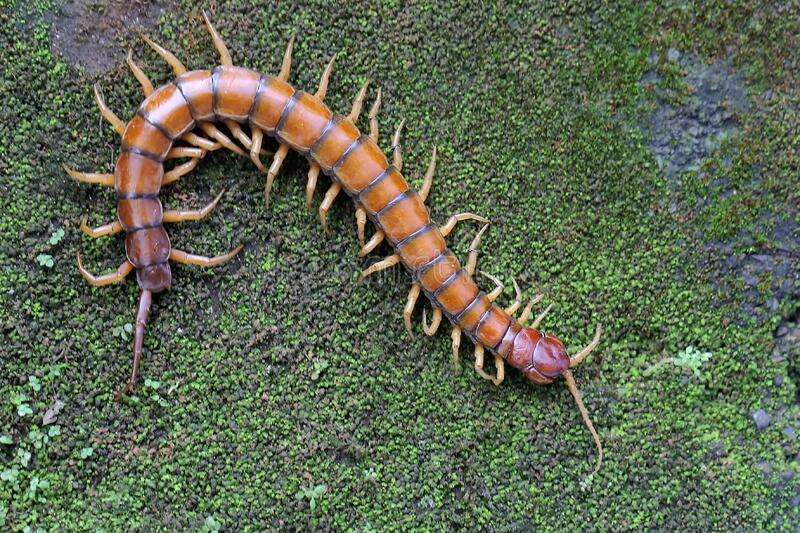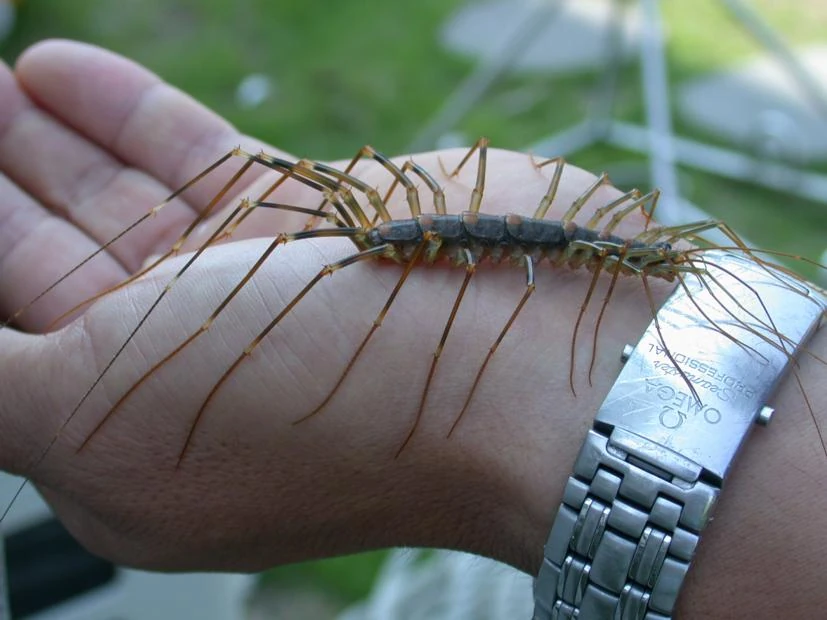
A centipede is called Scolopendra gigantean which belongs to the Scolopendra genus often known as the Peruvian gigantic yellow-leg centipede. With a length of more than 30 centimeters, it is the longest species of centipede in the entire globe (12 in). 21 or 23 segments are possible in specimens. It feeds on a variety of creatures, including other big arthropods, mammals, amphibians and reptiles.
Geographical Location
Northern South America is home to Scolopendra gigantea, which lives in tropical and subtropical woods.
Habitat
Centipedes are restricted to living in humid environments and are typically found in soil, leaf litter, or rotting wood because they lack a waxy cuticle covering.
Description of the body
Centipedes have flattened dorsoventral surfaces and are segmented into distinct, flattened body parts.
Legs
Given that each body segment contains two legs, there are always between 21 and 23 pairs of legs overall. They have spiky legs on the back to deter potential predators. The first body segment’s legs have been transformed into venomous teeth known as maxillipeds that centipedes use to pursue prey.
Mandibles
They have mandibles, which are a modified pair of legs that open to form a poison gland and have a sharp claw at the end. To catch and kill prey, mandibles are used.
Head
Centipedes have a shield-like covering over their heads, long, numerous joined antennae, and few or no eyes.
Brain
Their ventral system of ganglia connects their relatively large brain.
Heart
Their dorsal chambered vessel has a heart.
Spiracles
Spiracles, which are situated between the top and lower chitinous shields and just behind the legs, are used by centipedes to breathe.

Feeding
Giant centipedes are ferocious carnivores that eat lizards, toads, mice, and other tiny invertebrates in addition to crickets, worms, snails, and roaches.
Economic Importance in Humans Life
Positive Role
Scolopendra gigantea are useful to farmers and gardeners in reducing the potential pest populations since they eat a variety of insects and other “pests” Additionally, centipedes as a whole are becoming well-liked terrarium pets.
Negative Role
Scolopendra gigantea’s bite releases a poison potent enough to cause a human serious injury.
Reproduction
Even among adults, it can be challenging to distinguish between the sexes. The male must spin a little silk pad and then deposit his sperm on it because he lacks copulatory organs. The female then takes the sperm and places her eggs.
Behavior
Scolopendra gigantea must reside in damp settings, such as the earth or the underside of rocks, due to their manner of breathing. The species’ female takes care of her eggs once she lays them until the young can fend for themselves.
Keeping as Pet
Enclosure
Baby enclosures can be large, clear plastic containers with air openings that are terrestrial or semi-arboreal in nature. Adults are able to survive in 15 to 20 gallon tanks. The tank should be at least as wide and twice as long as the person. Height and floor space are equally significant. As long as the centipede cannot escape by running up the tank’s side, height is not a factor in this situation for climbing. This species will easily climb supplied sticks, rock formations, and both fake and genuine plants.
Substrate
Substrate options include potting soil, coconut coir, and natural soil that has been treated for parasites in the range of 2-4″ (5–10cm). To create a more natural atmosphere, the substrate can be combined with sand, tiny stones, leaf litter, and twigs. It is crucial to provide enough substrate for burrowing; a top layer of leaf litter, moss, natural bark, and twigs provides extra shelter and aids with moisture retention.
Conditions
Moist; In the enclosure, all centipedes should have access to some water. Although the substrate should maintain some moisture, it shouldn’t be overly wet or swampy.
Humidity
Periodic misting will help avoid desiccation at a humidity of 75-85%.
Temperature
Heating pads work better for most invertebrates than heat lamps at temperatures between 68 and 86 degrees Fahrenheit (20 and 30 degrees Celsius).
Table





